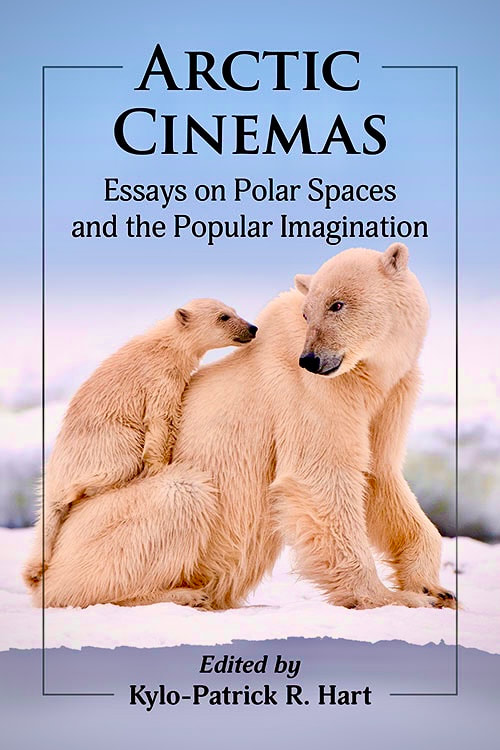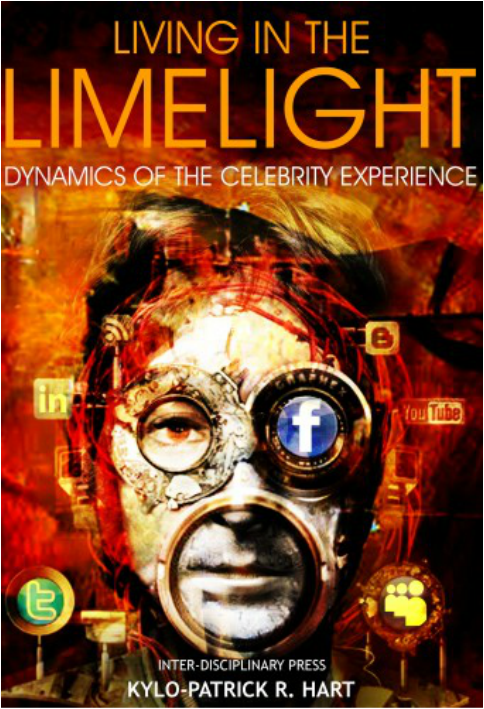Photos on Exhibition in Venice, Italy
Traveling to Venice, Italy in the next few days? If so, please stop by the Kunst Depot ‘Parrucche ai Biri’ Gallery, where eleven of my recent images (including the three featured above, titled [from left] Encounter, Mosey, and Spout) will be on exhibition from June 27-29, 2024. (June 2024)
Images Appear in Photography Magazine
Thank you to the publisher and editors of Barcelona-based FotoNostrum Magazine for including 28 of my recent images in their current special issue "highlighting the extraordinary ingenuity of photographers across the globe." Three of my current personal favorites—Elaborate, Essence, and Midwinter—of these 28 photographs are featured above. (May 2024)
Return to Wyoming Photography Exhibition
My solo photography exhibition Return to Wyoming premiered at Blue Koi Gallery on May 15, 2024 and runs until mid-July. It showcases the exceptional beauty encountered regularly by individuals traveling along the pastoral backroads of Colorado and Wyoming in the days just before spring officially begins. As the exhibition materials emphasize, the goal of the photographs in this collection—as well as in all of my creative work—is to inspire their viewers to wrestle with their intriguing contents and, as a result, ponder various aspects of our surrounding world in new and unique ways. (May 2024)
Street Photography Exhibition
Street Series, my latest solo photography exhibition, premiered at HMVC Gallery New York on August 1, 2023 and runs until the end of the month. As the artist statement pertaining to its 25 images reveals, "I believe the finest images are those that are serious yet playful, aesthetically appealing yet a bit quirky. As both an artist and an admirer, my favorite photographs tend to be ones whose contents speak loudly for themselves — even when it is not immediately clear exactly what they are saying.” (August 2023)
Ephemeral Visions Photography Exhibition
Ephemeral Visions, my solo photography exhibition, premiered at Art Square Gallery New York in late June 2023 and runs until the end of August. The curator’s statement notes that my “unique artistic vision blends seriousness with playfulness,” with each of the exhibition’s 31 images providing “a window into a world where the extraordinary resides within the ordinary, encouraging us to ponder the multifaceted aspects of our surroundings.” (June 2023)
Perspectives on Kink and Everyday Life
My newest book project, Kink and Everyday Life: Interdisciplinary Reflections on Practice and Portrayal (co-edited with Teresa Cutler-Broyles), has just been released. Its various essays (including two of my own), written by a combination of academic scholars and practitioners, demonstrate how a range of nonnormative sexual activities and ways of being can be empowering and liberating for their participants who experience them in real life and in media offerings of various kinds. Contributing to revised notions of inclusivity and acceptance, this interdisciplinary work skillfully explores historical and current approaches to understanding its intriguing subject matter and identifies avenues for future research. (August 2021)
Arctic Representations in World Cinema
My latest book project, the edited collection Arctic Cinemas: Essays on Polar Spaces and the Popular Imagination, is now available. Written by a well-informed group of academic scholars, artists, and filmmakers, its various chapters (including three of my own) provide an overview of the variety of works that fall under the conceptual rubric of “Arctic cinemas,” a noteworthy new subfield of film studies. In doing so, they demonstrate how films pertaining to Arctic inhabitants and experiences have contributed substantially to the social construction of Arctic spaces and places within the popular imagination over the course of the 20th century and beyond. (May 2021)
Lifetime Achievement Award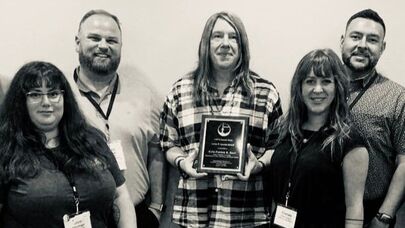
I am honored to be the recipient of the AEJMC Lesbian, Gay, Bisexual, Transgender, Queer Interest Group Leroy F. Aarons Award for Lifetime Contributions to LGBTQ Education and Research. This award recognizes career achievement in education and research affecting the LGBTQ community. It was presented at the annual conference of the Association for Education in Journalism and Mass Communication (AEJMC) in Toronto on August 9, 2019. (August 2019)
Cinematic Rock Blockbusters
From Christian Toto’s article “Hollywood Takes Leading Role in Defining Legacies, Selling Music with Rock Blockbusters” in the August 8, 2019 edition of The Washington Times: “Kylo-Patrick R. Hart, chairman of the Department of Film, Television and Digital Media at Texas Christian University in Fort Worth, Texas, said the timing couldn’t be better for classic rock revivals. ‘In troubling times, which many believe we are living in today, movies serve as an important means of escape from everyday realities, and the allure of nostalgia intensifies,’ Mr. Hart said. ‘The rock music these movies feature immediately transports many viewers back to the times and places where they originally encountered and enjoyed it in their own lives….’ Mr. Hart said Bohemian Rhapsody’s monster success made similar projects inevitable. That doesn’t mean the trend will last indefinitely. ‘This is likely to turn out to be a brief film cycle for now that will recur in the future, given that audience members are likely to tire quickly of too many such offerings in a row,’ he said.” (August 2019)
KS Lesions and Representing AIDS
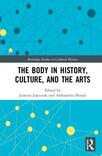
My chapter "Representing AIDS: KS Lesions, U.S. Visual Culture, and the Body as Canvas (1983-1993)" has been published in The Body in History, Culture, and the Arts, edited by Justyna Jajszczok and Aleksandra Musial. It demonstrates the centrality, and changing ideological significance, of foregrounding prominent Kaposi's sarcoma (KS) lesions in visual representations of AIDS during the pandemic's first decade. (March 2019)
Queer Males in College Movies

My chapter "Queer Males in College Movies: Moving from Denial to Acceptance" has been published in Cinema U: Representations of Higher Education in Popular Film, edited by Randy Laist and Kip Kline. It analyzes the representation of queer males in five noteworthy films--Threesome (1994, Andrew Fleming), Defying Gravity (1997, John Keitel), The Rules of Attraction (2002, Roger Avary), Mulligans (2008, Chip Hale), and The Mysteries of Pittsburgh (2008, Rawson Marshall Thurber)—released during the mid-1990s onward, revealing the degree to which both queer characters and U.S. society have increasingly moved from denial to acceptance of male queerness in its various forms during this same period. (November 2018)
The Men with the Pink TriangleMinimizing Ethnicity in 1950s TV

My article “Minimizing Ethnicity in 1950s Television: The Rapid Rise and (Inevitable) Demise of Life with Luigi” has been published in the academic journal Studies in American Culture. It examines network efforts to reduce the stereotypical narrative strategies and messages pertaining to Italian Americans in the popular but short-lived 1950s CBS situation comedy Life with Luigi, which initially aired in the time slot following I Love Lucy. It further demonstrates how such efforts to revamp the series, by reducing its ethnic imagery and altering its approaches to humor, were futile at the particular historical moment when television was spreading quickly from America’s cities into the suburbs. (October 2016)
Queer Media in the 21st Century Conference
The Queer Media in the 21st Century Conference will take place at Texas Christian University on Friday, November 4 and Saturday, November 5, 2016. This two-day academic event will feature an opening address, four plenary sessions, and a variety of panels on noteworthy queer topics. A sampling of its intriguing presentation titles includes “Found Footage and the Uncertain Status of AIDS Activist Media in How to Survive a Plague”; “The Kids are All Right: A (Queer) Portrait of the Modern American Family”; “On Aliens and Alienation: Childhood Trauma, Adolescent Sexuality, and Mysterious Skin”; “‘Praying the Gay Away’: Representations of Conversion Therapy in Film and Television”; “‘True Trans’: The Construction of Laura Jane Grace’s Broadcast Transgender Identity”; and “‘We Flawless, Ladies Tell ’em’: Camp, Race, and Feminism in the Performances of Beyonce,” among many others. Anyone who is interested in attending should contact conference organizer Kylo-Patrick Hart ([email protected]) by Tuesday, October 25, 2016. (October 2016)
Queer TV in the 21st Century
My new book, the edited collection Queer TV in the 21st Century: Essays on Broadcasting from Taboo to Acceptance, is hot off the press. The contributions to this collection explore queerness in contemporary television during the period from 2000 to the present, in a variety of noteworthy offerings that includes Buffy the Vampire Slayer, The Ellen DeGeneres Show, The L Word, Modern Family, The New Normal, Queer as Folk, RuPaul’s Drag Race, Spartacus, and Will & Grace, among others.
My own contributions to this collection are the essays “Media Representation and Sensitive Subjects” and “We’re Here, We’re Queer—and We’re Better Than You: The Representational Superiority of Gay Men to Heterosexuals on Queer Eye for the Straight Guy.” As these and the additional analyses demonstrate, in many television series of the current millennium queer characters have achieved visibility at the expense of minimizing much of their queerness. Readers will discover that the exceptions to this trend are as eye-opening as the numerous examples in which it is readily evident. (May 2016) Queer Studies in Media & Popular Culture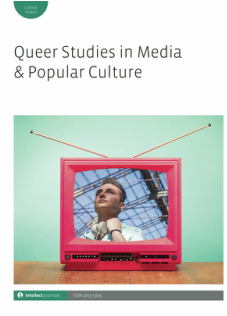
The inaugural issue of Queer Studies in Media & Popular Culture, the new academic journal from Intellect Ltd. of which I am a founding co-editor, has just been released. It contains my discussion of a handful of the most intriguing queer media offerings of all time along with a series of research articles and reviews that cumulatively focus on particularly noteworthy films (including Brokeback Mountain, Hedwig and the Angry Inch, I Am Jazz: A Family in Transition, Shortbus, Soldier’s Girl, and Tangerine), television programs (including Bewitched, Buffy the Vampire Slayer, Stargate SG-1, and Undressed), and other media offerings (including the numerous online videos of the It Gets Better Project and the book Geisha of a Different Kind: Race and Sexuality in Gaysian America). The journal's primary aim is to publish cutting-edge, peer-reviewed scholarship on a wide range of subjects and phenomena at the intersection of media/popular culture and queerness in gender/sexuality. (January 2016)
Dynamics of the Celebrity ExperienceMy new book, the edited collection Living in the Limelight: Dynamics of the Celebrity Experience, has just been published. To enable readers to grasp the cumulative complexity of contemporary celebrity culture, its sixteen chapters explore noteworthy dynamics of the celebrity experience in recent centuries and up to the present day. In doing so, they explicitly analyze ever-changing phenomena of relevance to celebrity culture, the importance and impact of fans and fandom(s), and the various pleasures and pitfalls that celebrities regularly encounter.
My own chapter in the collection is "Trapped by Celebrity Status and Dead Too Soon: Aspirational Limitations and the Career Trajectories of Marilyn Monroe and Jim Morrison." The book's additional chapters include "More Than a Text: On the Affective Relation between Lady Gaga and Her Fans," "To Be Seen or Not to Be Seen: Narcissistic Tendencies among Bloggers," "When Did Darth Vader Turn Cuddly? Phenomenology and Fandom," and "There Will Be Blood: The Darker Side of K-Pop Fandom." (September 2015) Timeless Cinema: The Breakfast Club

From Bill Goodykoontz's article "Timeless Cinema" in the July 5, 2015 edition of The Arizona Republic, with regard to the 1985 film The Breakfast Club: "Truly, it is one of those films that you always remember seeing for the first time, no matter when that first time was. That's important, too. Kylo-Patrick Hart, professor and chairman of Texas Christian University's department of film, television and digital media, listed a few attributes that make movies timeless, and each applies here: 'Clearly delineated characters, memorable and quoteworthy lines of dialogue, and a compelling soundtrack filled with songs that immediately transport a viewer back, in his or her mind, nostalgically to the time and place in which the film was originally viewed.'" (July 2015)
Bullying in Popular Culture
My chapter “Queerness and Bullying in Popular Culture” has been published in Bullying in Popular Culture: Essays on Film, Television and Novels, edited by Abigail Scheg. It explores the topic of queerness in relation to the phenomenon of bullying as it is represented in the feature film The Mudge Boy and the FOX television series Glee. One of the common themes foregrounded in both of these narratives is that the bullies’ own latent homosexual tendencies are what motivate them to feel so threatened by the otherness of their surrounding young males and to lash out at them in such deleterious and disturbing ways. Another is that queerness (in the sexual orientation sense) does not always manifest itself in blatant or stereotypical ways. Relevant insights from the psychological literature on bullying are employed to critique the effectiveness of both of these intriguing media representations. (April 2015)
Communication Devices Gone Wild
My article “Supernatural Potentialities and Household Technologies: Communication Devices Gone Wild in Tales of Tomorrow and The Twilight Zone” has been published in the themed issue of Supernatural Studies (Volume 2, Issue 1) pertaining to television and the supernatural. It explores dystopian fears that technological advancements may potentially be supernatural creations that are somehow out of control, and threaten to destroy the private lives of individuals, because they may not actually operate only in the ways for which they have been developed. In doing so, it raises important questions about the potential loss of feelings of mastery that go hand-in-hand with household communication technologies and about the short-term and long-term control of such technologies by their creators and users. (March 2015)
Age-Different Relationships in Film
My chapter "Looking at Complicated Desires: Gay Male Youth and Cinematic Representations of Age-Different Relationships" has been published in Queer Youth and Media Cultures, edited by Christopher Pullen. It examines a handful of noteworthy films representing the complicated desires that surface when gay male youths find themselves in age-different relationships, defined as romantic and/or sexual relationships in which one member is younger than the established legal age of consent. As such, this chapter foregrounds the significance of meaningful acts of looking—whether they occur among characters within the story world or by spectators in relation to the on-screen actions as they unfold—to the messages about age-different relationships that audience members derive from their viewing experiences of such films as For a Lost Soldier (1992, Roeland Kerbosch), Eban and Charley (2000, James Bolton), and Absent (2011, Marco Berger). (October 2014)
Alternative Visions in Media

“Alternative Visions in Media,” a special issue of the academic journal The Communication Review that I was invited to guest-edit, has been published by Routledge. Its topics include class-inflected masculinities in FX crime dramas, eating disorders as humorous entertainment, otherness in the video game Assassin’s Creed III, and female submission in feminist kink porn. The articles in this special issue grew out of the Alternative Visions in Media Conference, a weekend-long exploration and celebration of media offerings of the avant-garde, camp, cult, experimental, exploitation, extreme, independent, kitsch, pulp, schlock, and trash varieties that took place in Fort Worth, Texas in November 2013. Their authors are conference participants Jeroen Dera, Emily Newman, Elena Popan, Marco Rodriguez, Sarah Stevens, R. Colin Tait, and Michael Wayne. (August 2014)
Hegemonic Masculinity Redux
From Caroline Collier's article "Reel Men: Examining Images of Masculinity in the Media" in the Spring 2014 issue of TCU Endeavors: "When [Kylo-Patrick Hart] started watching the cable show Justified, he felt 'drawn to the characters,' he says. The show's protagonist, Deputy U.S. Marshal Raylan Givens, to him resembles the portrayal of a typical American man as depicted in 1950s films and television shows.... The stereotypical 1950s man, the one 'in the gray flannel suit,' subdued his violent tendencies in order to fit in and focus on home and family life. He was not real, according to Hart. The man 'was just a social construction that everyone assumed existed outside the realms of representation,' he says.... And this media representation of masculinity 'is still part of our American consciousness,' Hart says. 'It does affect people's choices today.'" (January 2014)
Analyzing Bette Davis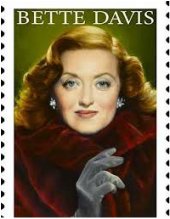
From Scott Smith's article "Bette Davis Was Box-Office Smash By Doing It Her Way" in Investor's Business Daily: "'Bette Davis was not afraid to stand out as distinctive from the earliest days of her career,' said Kylo-Patrick Hart, chairman of Texas Christian University's [film, television and digital media] department. 'She was headstrong and determined about getting the roles she wanted and working with studio personnel and members of the entertainment press to construct her star persona as a spirited, independent woman. She used that image to make herself a powerful actress and businesswoman.'" (October 2013)
Queer Cinema in the 21st Century
"Queer Cinema in the Twenty-First Century," a special double-issue of New Cinemas: Journal of Contemporary Film that I recently guest edited, has just been released by Intellect. It features my introductory assessment of the current state of contemporary queer cinema in relation to a series of groundbreaking articles by international scholars exploring films such as Bend It Like Beckham, Chutney Popcorn, Hairspray, The Mudge Boy, Nostalgia, Shortbus, and Student of the Year. Topics include the cinema of India, the future of queer pornography, gender-bending, global queerness, the politics of hypothetical history, and post-queer issues and representations. The goal of this special issue, as well as New Cinemas more generally, is to "provide a platform for the study of new forms of cinematic practice and fresh approaches to cinemas hitherto neglected in western scholarship." (September 2013)
Apocalyptic Visions in the Media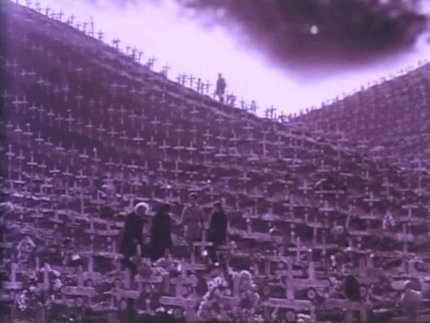
From Daniel Sander's article "Unhappy End" in the September 2013 issue of KulturSPIEGEL: "Apocalyptic media offerings tend to come in cycles," says Kylo-Patrick Hart. "Although as of late there have been numerous films, television programs and books dealing with apocalyptic story lines and themes, I believe they reflect an ongoing pop cultural fixation with the apocalypse that is peaking at the moment, will soon subside, and will resurface again with similar enthusiasm in the not-too-distant future--if the world does not come to an abrupt end before then, that is." (September 2013)
Queer Males in Contemporary Cinema
My most recent book, Queer Males in Contemporary Cinema: Becoming Visible, is now available from Scarecrow Press. It explores latent and manifest representations of queer males from the 1950s to the present in a range of noteworthy films that includes Boys Don't Cry, Brokeback Mountain, Chocolate Babies, Cruising, From Here to Eternity, Hedwig and the Angry Inch, Kinsey, Life and Death on the A-List, The Living End, My Own Private Idaho, The Mysteries of Pittsburgh, Point Break, Race You to the Bottom, Red River, Saturday Night Fever, Shortbus, Silverlake Life: The View from Here, Soldier's Girl, Totally F***ed Up, and Transamerica.
Examining cinematic offerings pertaining to bisexual, gay, and transgender men as well as transsexuals, transvestites, queer teens, queer people with AIDS, and others, this book demonstrates not only how much has changed in terms of cinematic representation over the past several decades but also how much has remained the same in both mainstream and independent works. (April 2013) |
Kylo-Patrick R. Hart, Ph.D.
Department of Film, Television and Digital Media Texas Christian University TCU Box 298030 Fort Worth, Texas 76129 [email protected] Recipient of the AEJMC Lesbian, Gay, Bisexual, Transgender, Queer Interest Group Leroy F. Aarons Award for Lifetime Contributions to LGBTQ Education and Research
|







